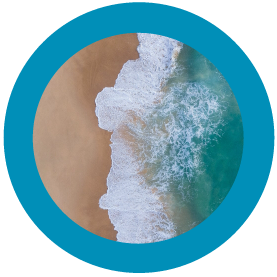PRETREATMENT SOLUTIONS FOR SEAWATER DESALINATION
IDE offers advanced pretreatment technologies for membrane seawater desalination

The main objective of the pre-treatment is to protect and increase the lifespan of RO membranes, by providing feed water quality according to membrane manufacturer specification.
The pre-treatment process removes particles, debris, microorganisms, suspended solids, and silt from the seawater source before it is fed to the reverse osmosis separation stage for safe and economic operation.
The pre-treatment stage insures the prolonging of the membranes life time and optimizes the overall operation costs of the plant.
In some cases, the presence of microorganisms in the feed water such as bacteria and algae, can lead to significant biological fouling on the membranes. IDE Technologies specializes in treating and preventing such fouling.
Mega size desalination plants are often located in regions with challenging feed water quality. For that, IDE has developed a unique approach for robust pre-treatment of this challenging water.
At IDE, we offer a complete range of pre-treatment solutions:
Lamella Clarifiers
Lamella clarifier serves to remove heavy particles by settling into inclined plates. This separation method requires prior flocculation and coagulation steps. Lamella clarifier is designed to maximize settling efficiency of suspended particles with minimal footprint.
DAF (Dissolved Air Flotation)
DAF technology is an efficient procedure for the separation of suspended matter (turbidity / TSS, algae etc.) from seawater, . Dissolved air flotation (DAF) utilizes the property of micro-bubble adherence to suspended solids, increasing the tendency of the particles to float. These micro-bubbles attach themselves to discrete floc particles created in the flocculation process. DAF enables efficient separation of suspended solids, and oil & grease traces, as well as the reduction of organic load. IDE designs a stand alone DAF or DAF in filter, as part of the pretreatment.
Multimedia Filtration (MMF)
A multi-media filter (MMF) is used to reduce the level of suspended solids in feed water by filtration through several granular media, which can include gravel, sand and anthracite. This method is implemented in the majority of desalination plants, and its advantage is low consumption of chemicals and high system sustainability.
Ultrafiltration (UF)
Ultrafiltration (UF) is a pressure-driven membrane filtration process. UF is used for separation of suspended solids, colloids, and bacteria. The filtration is achieved by forcing the water to flow through a membrane with a small pore size of approx. 0,02 μm, which creates a barrier and produces water with high purity and low SDI (silt density index)
Contact an IDE Expert
Would you like more information about our technologically advanced solutions?










